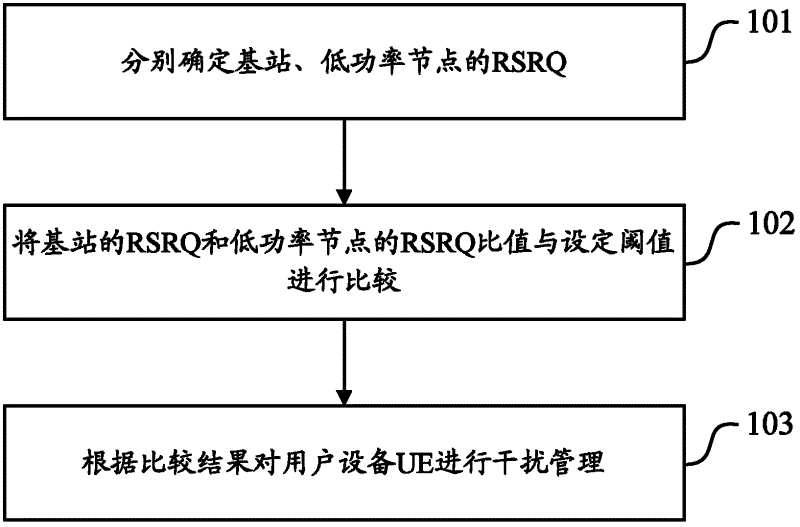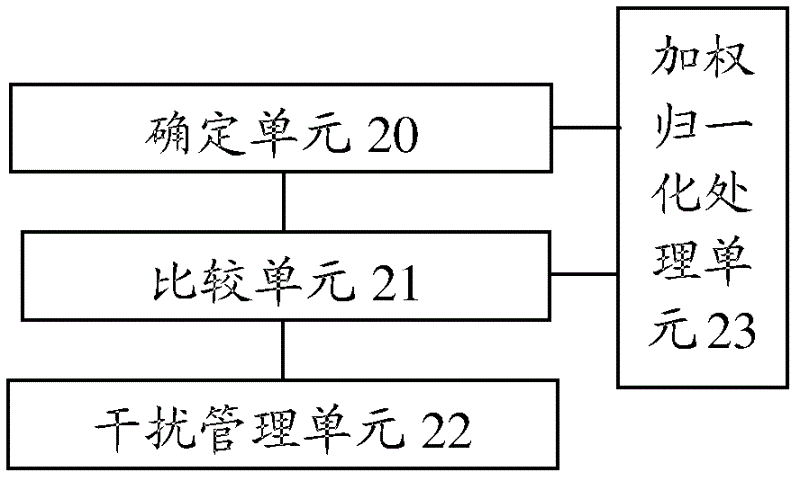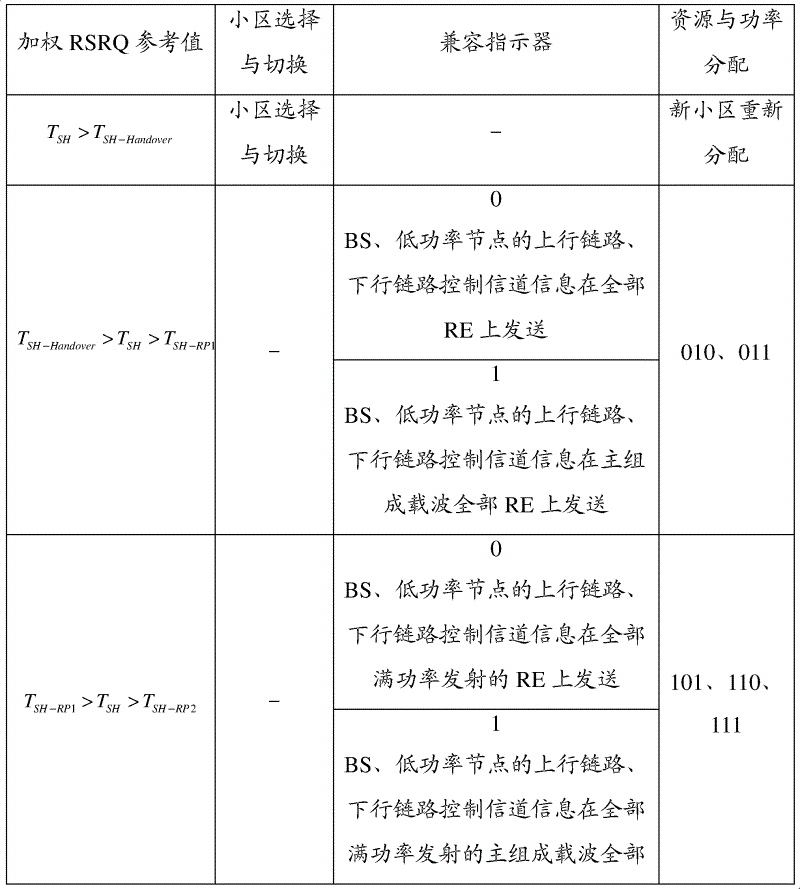Interference management method and device in heterogenous network
An interference management, heterogeneous network technology, applied in the field of interference management, can solve the problems of unapplied control channels, reduced service area, low transmit power of low-power nodes, etc.
- Summary
- Abstract
- Description
- Claims
- Application Information
AI Technical Summary
Problems solved by technology
Method used
Image
Examples
Embodiment Construction
[0057] The basic idea of the present invention is: respectively determine the RSRQ of the base station and the low-power node, compare the ratio of the RSRQ of the base station and the RSRQ of the low-power node with a set threshold, and perform interference management on the user equipment UE according to the comparison result.
[0058] figure 1 It is a flowchart of an interference management method in a heterogeneous network according to an embodiment of the present invention, such as figure 1 As shown, the interference management method in the heterogeneous network in this example specifically includes the following steps:
[0059] Step 101, determine the RSRQ of the base station and the low power node respectively.
[0060] Here, the RSRQ is briefly introduced first. RSRQ needs to be determined by Reference Signal Received Power (RSRP, Reference Signal Receiving Power) and Received Signal Strength Indicator (RSSI, Received Signal Strength Indicator), where RSRP is all ...
PUM
 Login to View More
Login to View More Abstract
Description
Claims
Application Information
 Login to View More
Login to View More - R&D
- Intellectual Property
- Life Sciences
- Materials
- Tech Scout
- Unparalleled Data Quality
- Higher Quality Content
- 60% Fewer Hallucinations
Browse by: Latest US Patents, China's latest patents, Technical Efficacy Thesaurus, Application Domain, Technology Topic, Popular Technical Reports.
© 2025 PatSnap. All rights reserved.Legal|Privacy policy|Modern Slavery Act Transparency Statement|Sitemap|About US| Contact US: help@patsnap.com



